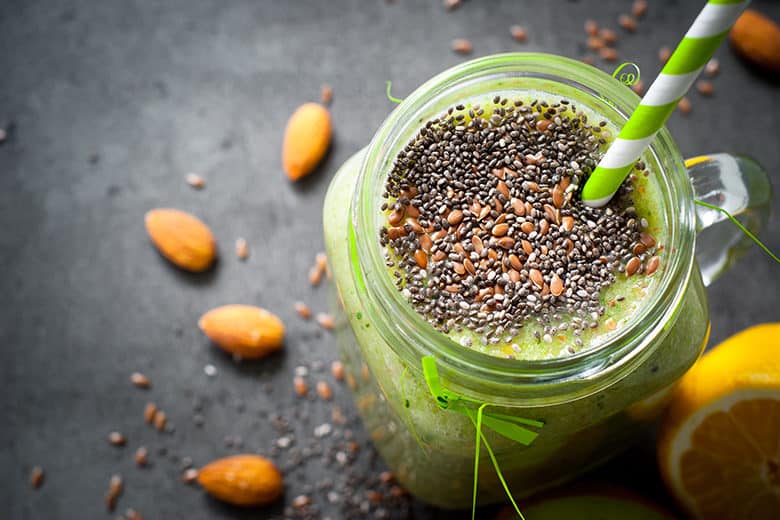
I have yet to experience a day when my eyes don’t feast on at least one social media post showcasing trendy and healthy eats. There are variations of smoothie bowls, avocado toasts and beet hummus everywhere! From social media alone, dietitians can see and enjoy the fruits of their labor. Though it truly makes me swell up with pride seeing the great changes and choices people around me are making, I would like to go one step further by pointing out the importance of packing each meal with as many nutrients as possible, without eating too much.
Chia Seeds
These little seeds are relatively new to the nutrition scene, but have been around for thousands of years, dating back to the Mayan and Aztec civilizations. Warriors consumed these seeds before battle for strength, and for good reason. One ounce of chia seeds provides 138 calories, 10 grams of fiber, 7 grams of polyunsaturated fatty acids and 5 grams of protein! One ounce of chia seeds also is a good source of calcium and excellent source of phosphorus and magnesium. These little fellas gelatinize when placed in liquids, helping to keep you feeling full. Eat them by themselves or add them to your grains (rice, quinoa, hot cereals), smoothies and yogurts for a nutrient boost. Note that they have a bland taste, so they won’t change a dish’s flavor.
Flaxseed
Brown or golden in color and similar in shape to sunflower seeds, flaxseed are full of nutrients. One ounce provides 150 calories, 8 grams of fiber, 8 grams of polyunsaturated fatty acids and 5 grams of protein. They also contain phytochemicals called lignans, which have anti-cancer properties. To absorb flaxseeds’ nutritional benefits, you must ingest them ground, as the body is unable to process whole flaxseed. It’s easy to add these to yogurt, baked goods batter, mayonnaise–based dressings and soups. They, too, don’t change the taste of the foods you’re creating.
Matcha Green Tea
This tea powerhouse has come full force onto the nutrition scene. Before harvest, the leaves used to make matcha tea are shaded for about three weeks to build up the chlorophyll content, which accentuates the bright green color. The leaves are then ground into powder. The taste of matcha matches its earthy color, conjuring up an umami flavor when consumed. Nutritionally, matcha packs a punch with catechins, a powerful antioxidant. One study indicates that the concentration of epigallocatechin gallate (EGCG, a type of catechin) in powdered matcha is greater than in conventional green teas. It’s also theorized that catechins combat inflammation, promote healthy circulation and help protect the vascular system, but more research needs to be conducted to fully prove that notion. Matcha powder contains only 3 calories per gram and can be added to smoothies or coffee, sprinkled on baked goods or used as a spice. But unlike chia and flax, note that it may be an acquired taste, so use sparingly until you like or get used to it.

.png)
